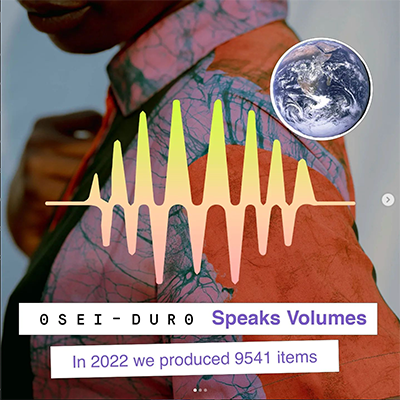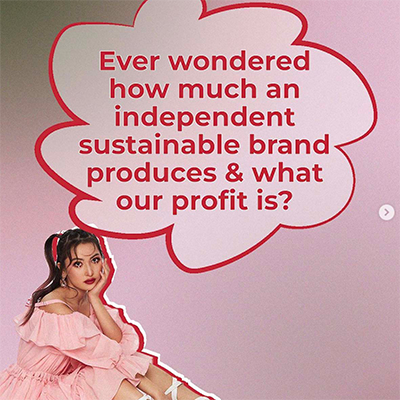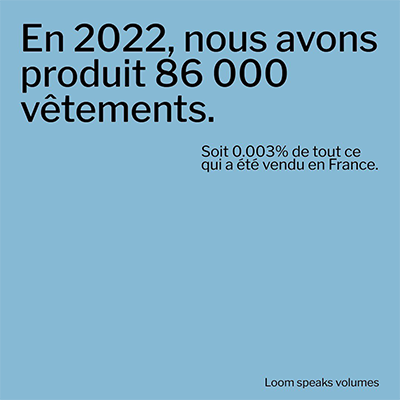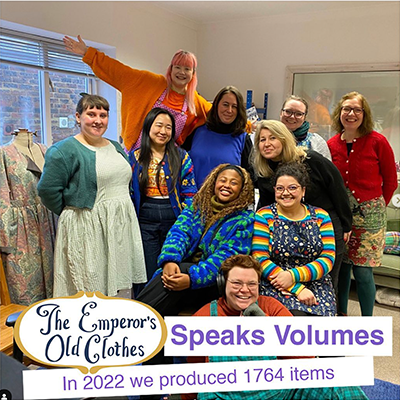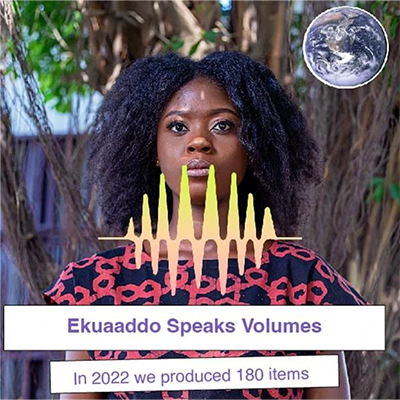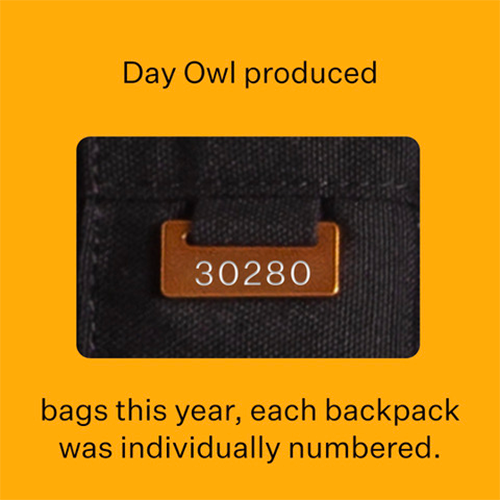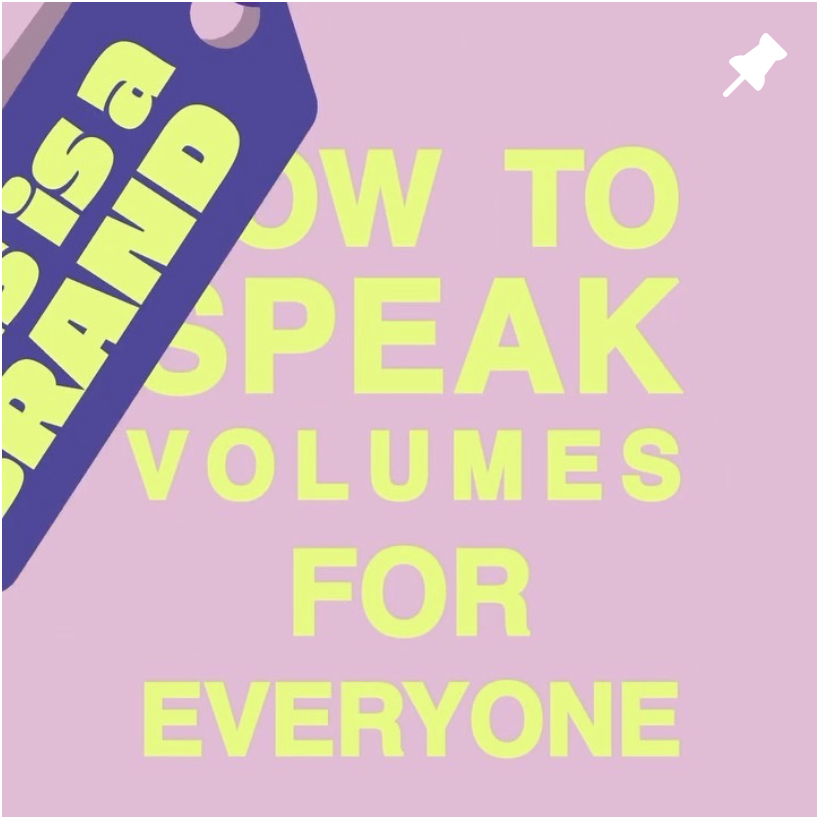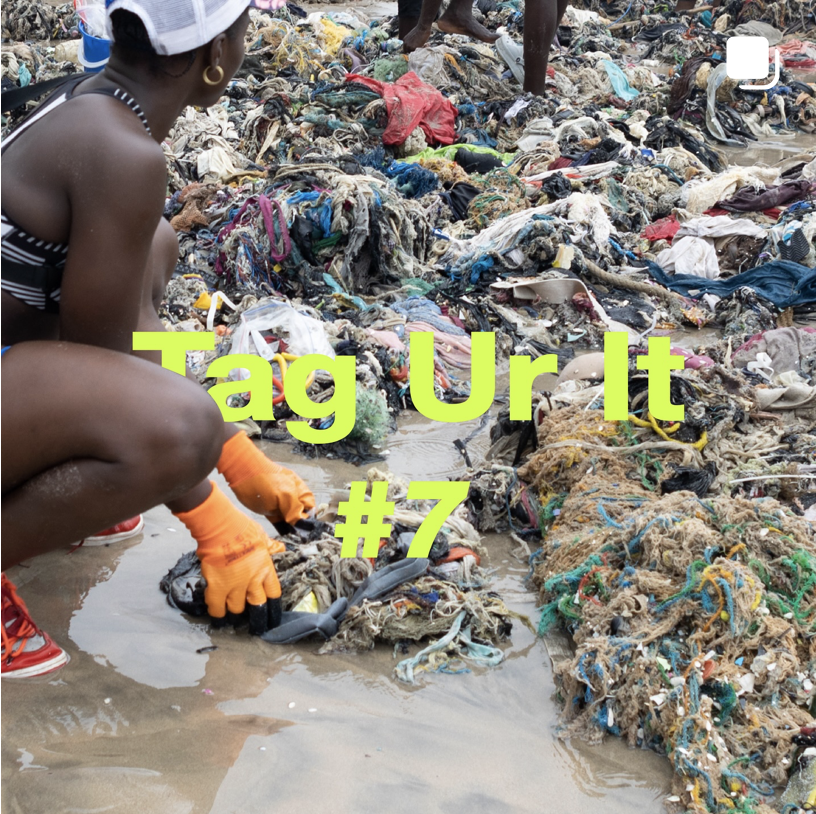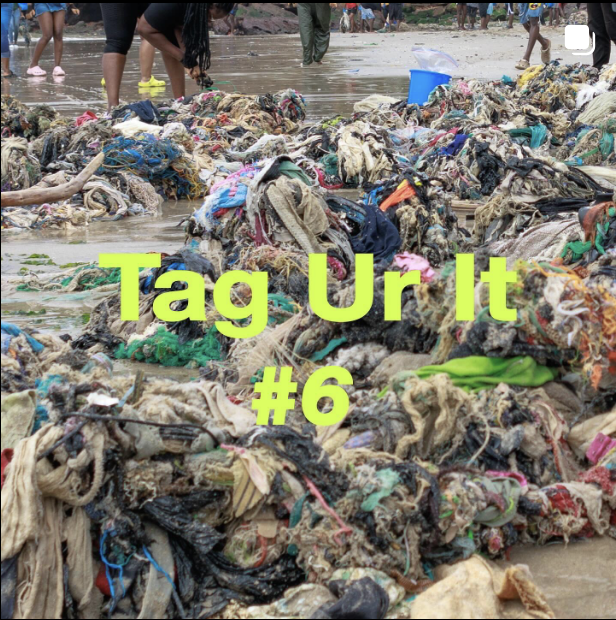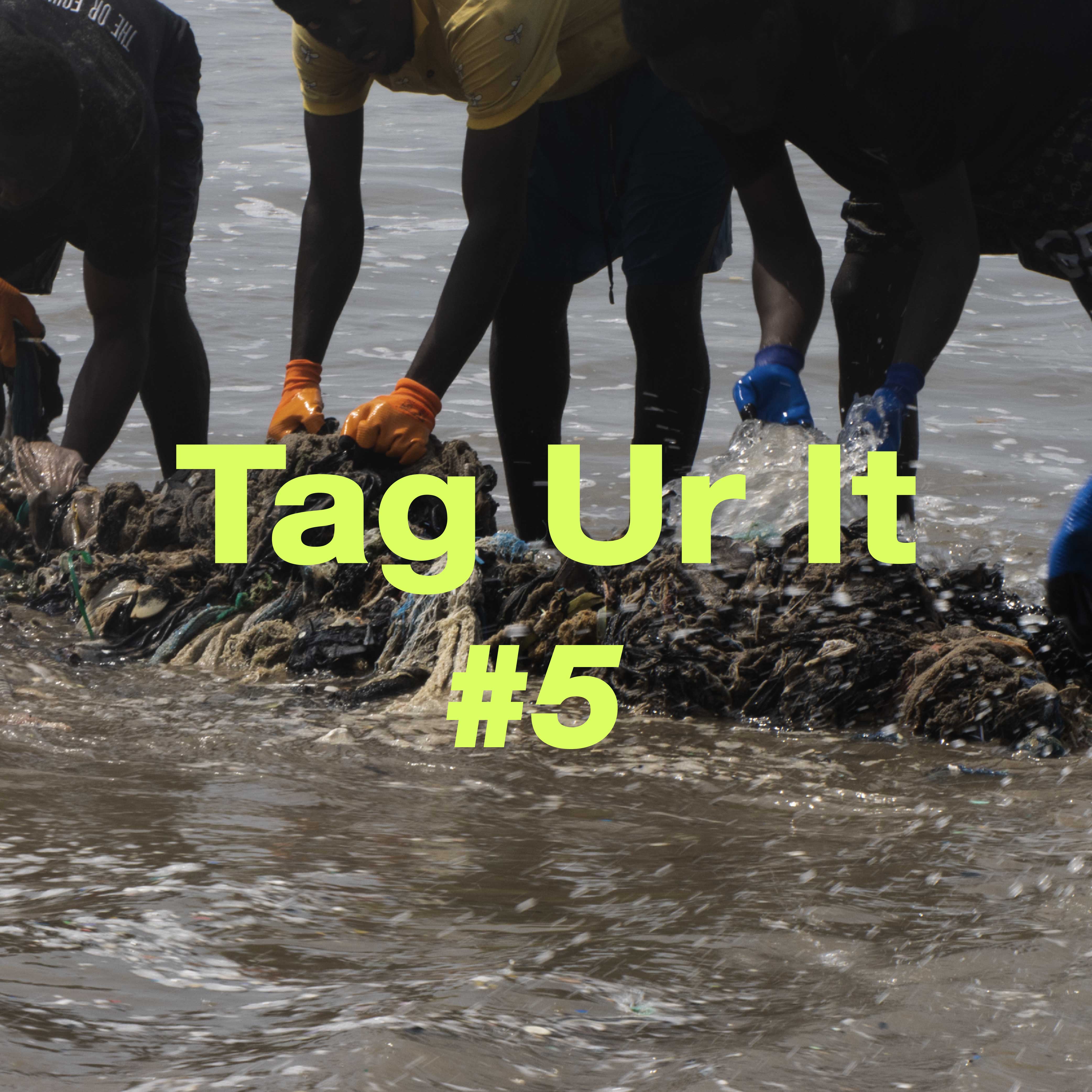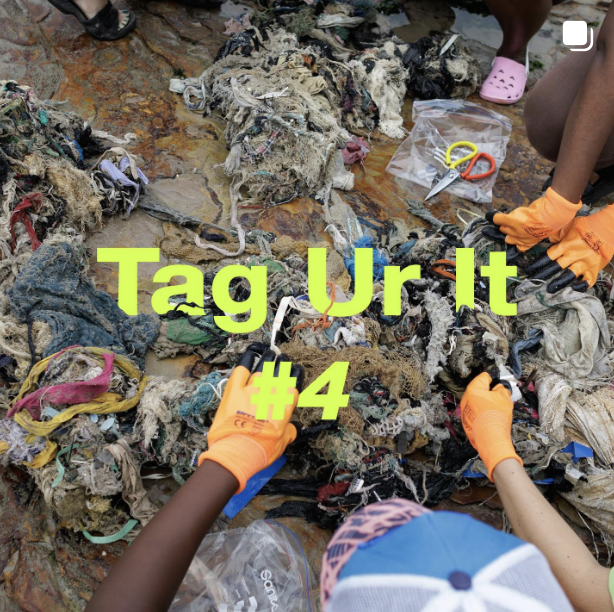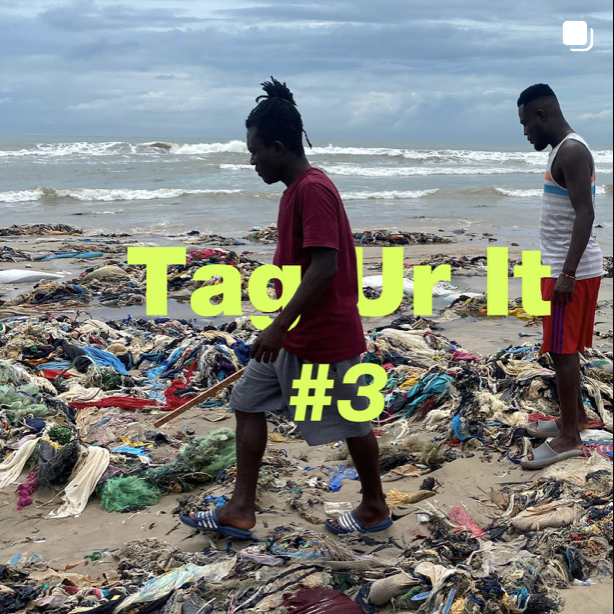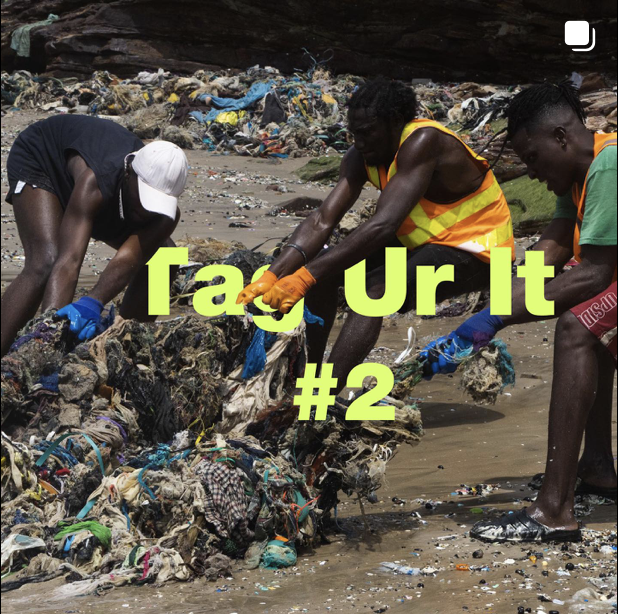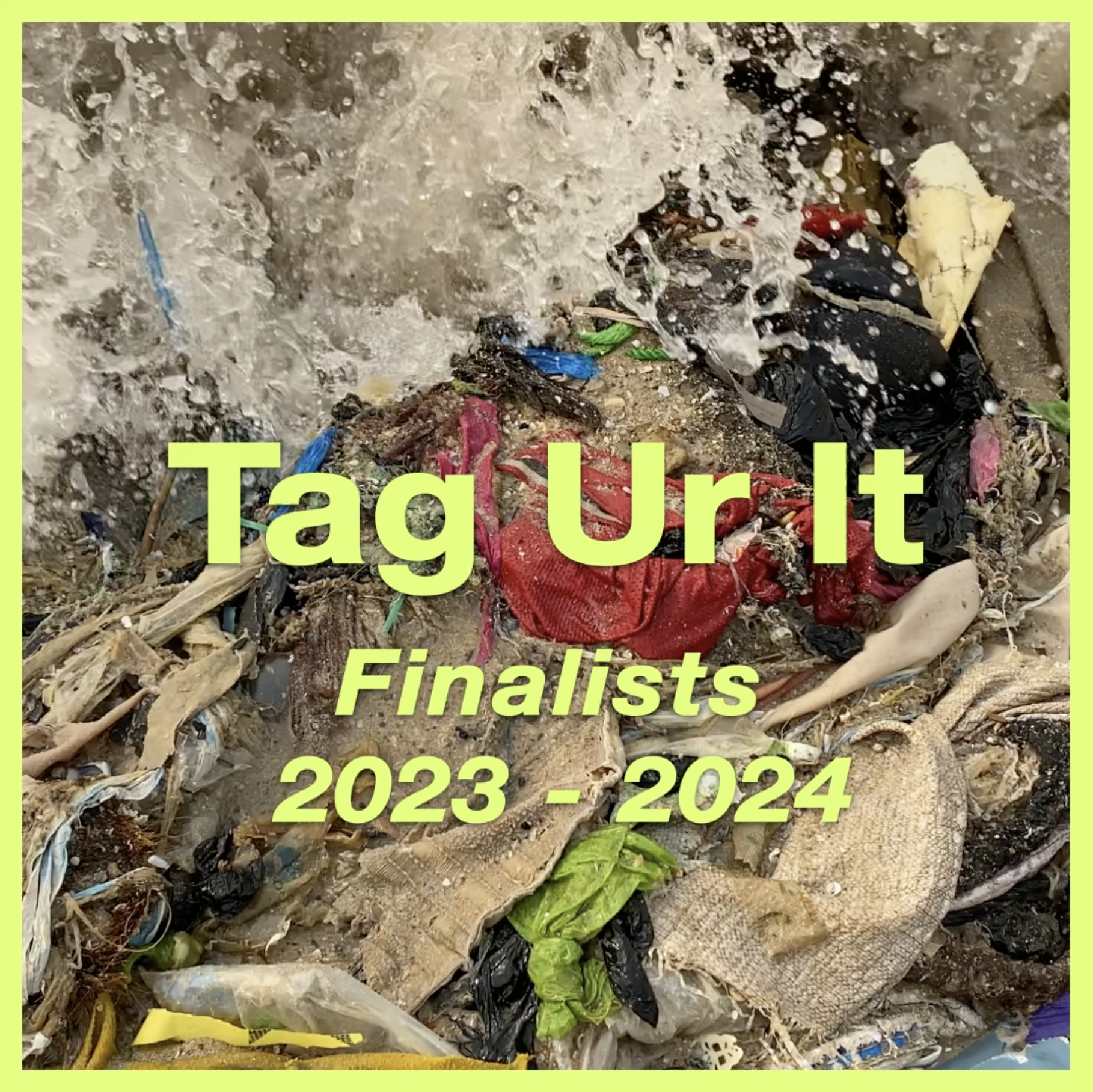Speak Volumes!
How many garments are produced every year? No one knows.
We need YOU to help us change that.
5 Reasons All Brands Should Disclose Their Annual Production Volumes
-
We do not have accurate data on the size of the fashion industry – the available statistics suggest that between 80bn and 150bn new garments are made every year. This is an embarrassing data gap.
-
If we are going to clean up fashion’s waste crisis, develop data-driven policies and transition from a linear to a circular economy, we need to know how many garments exist.
-
Despite a lack of data, textile waste is wreaking havoc on ecosystems and communities around the world such as Ghana’s Kantamanto Market, Chile’s Atacama desert and Kenya’s Dandora Dumpsite.
-
Unlike the carbon footprint for their products, production volume is a data point that is easy for brands to calculate. Unlike many other measurements of sustainability, production volume is a data point that is easy for the average consumer to understand.
-
Production volumes impact everyone along the value chain including garment workers, retail associates, designers, delivery drivers, secondhand retailers and waste pickers.
-
See here for the top brands ending up on Ghana’s beaches. And find the full list of over 3,800 companies found on Accra’s beaches here.
-
Please note that in August, 2024 this letter was emailed to these top brands, endorsed by over 90 Industry Insiders, inviting them to step up and publish their volumes. This follows a similar invitation which was extended to brands in person when letters were hand delivered to their UK headquarters. If you would like to take the extra step of emailing or hand delivering a letter to one of these brands, here is a template you can follow.
Join the ‘I Can Count, Why Can’t You?’ Challenge on Social
You might be wondering…"Production volumes, isn’t that data every brand has readily available?” Indeed, we aren’t asking for much. Maybe the brands just need a little encouragement!
That is where you come in…
Join the ‘I Can Count, Why Cant You’ social media challenge by counting the number of clothing items in your closet and share the number to show brands that, it is indeed easy to #SpeakVolumes.
Tag three of your favorite brands and challenge them to be brave and join you 😉
You can also challenge your friends to add their voice by taking part in the challenge and signing the petition at speakvolumes.org!
Your voice matters, so #SpeakVolumes!
Disclaimer: For some of the brands listed below we do not know if this includes licensed products or product collaborations.
Brands Publishing Their Production Volumes

“Committed, Loud & Proud”
Brands with the Megaphone badge have joined the Speak Volumes campaign by filling out our unique form which collects data on their counting methodology and includes a commitment to disclose production volumes in their sustainability reports going forward, ensuring that this is not a one time action. They also have communicated their participation in Speak Volumes and disclosed their volume count to their consumers via social media or popular press, aiding us in educating the general public and courageously stepping up their transparency game!
Read More + Read Less -

“Committed Long Term”
Brands with the Graph badge have joined the Speak Volumes campaign by filling out our unique form which collects data on their counting methodology and includes a commitment to disclose production volumes in their sustainability reports going forward, ensuring that this is not a one time action. They haven’t yet communicated their production volumes to consumers via their social media or popular press.
Read More + Read Less -

“On the Journey”
Brands without a badge have not yet agreed to participate in Speak Volumes but their production volumes have been disclosed elsewhere as identified by not-for-profit Fashion Revolution. Please note that by not participating in Speak Volumes these brands have not committed to continually disclose production volumes.
Read More + Read Less -
{target="_blank"} in 2023](/_static/media/logo_adidas.png)
Adidas produced 328,000,000 pieces in 2023
-
482,000,000 pieces in 2022
-
482,000,000 pieces in 2021
-
465,000,000 pieces in 2020
-
528,000,000 pieces in 2019
Read More + Read Less -

Alchemist produced 30,000 pieces in 2023

Ālex Menorca produced 4 pieces in 2024

Amarenak produced 762 pieces in 2024

ANZ Styles produced 864 pieces in 2024

Arber Studio produced 2,563 pieces in 2023
 in 2024](/_static/media/logo_armedangels.png)
ARMEDANGELS produced 2,530,340 pieces in 2024
-
2,222,986 pieces in 2023
Read More + Read Less -

Ashanti Empress produced 1,700 pieces in 2024
-
1,532 pieces in 2023
Read More + Read Less -

ASKET produced 231,383 pieces in 2022
{target="_blank"} in 2022](/_static/media/logo_bally.png)
Bally produced around 650,000 pieces in 2022

Batera produced 1,223 pieces in 2024

Bel&Bo produced 4,360,931 pieces in 2024

Blaudebaus produced 3,124 pieces in 2024

Blaugab produced 2,153 pieces in 2024

BLOOM BY EDZI produced 250 pieces in 2022

Blue Banana produced 891,259 pieces in 2024

BORBALA produced 364 pieces in 2024
-
515 pieces in 2023
-
400 pieces in 2022
Read More + Read Less -

Brave Soles produced 500 pieces in 2022

Bubangoo produced 31 pieces in 2024

Bufandy produced 4,429 pieces in 2023

Bumboo Lingerie produced 0 pieces in 2024

Buno Behen produced 154 pieces in 2022

BUZIGAHILL produced 597 pieces in 2022
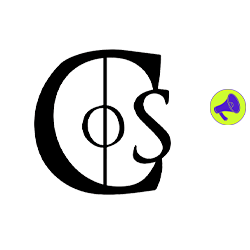
Church of Sanctus produced 432 pieces in 2022

Collina Strada produced 16,834 pieces in 2024
-
20,000 pieces in 2022
Read More + Read Less -

Colmillo De Morsa produced 1,500 pieces in 2024

Cruca produced 102 pieces in 2024

Day Owl produced 30,280 pieces in 2022

de & da produced 0 pieces in 2024

ECOALF produced 1,197,507 pieces in 2024

Ecodicta produced 473 pieces in 2024

EKUAADDO produced 180 pieces in 2022

Elisamuresan produced 8,163 pieces in 2024

el.résidu produced 135 pieces in 2023

Elsien Gringhuis produced 662 pieces in 2023

E.L.V. DENIM produced 2,135 pieces in 2024
*##### 4,052 pieces in 2023
Read More + Read Less -

Engineer produced 102 shoes in 2024

Esmé New York produced 6,631 pieces in 2024
-
2,500 pieces in 2023
Read More + Read Less -

Faguo produced 622,791 items in 2024
{target="_blank"} in 2023](/_static/media/logo_fendi.png)
Fendi produced around 3,000,000 pieces in 2023
](/_static/media/logo_finisterre.png)
Finisterre produced 495,158 pieces in 2024
-
359,164 pieces in 2023
-
450,643 pieces in 2022
Read More + Read Less -

Fifth Origins produced 1,800 pieces in 2023
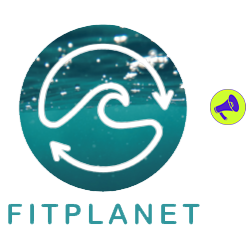
FITPLANET produced 12 pieces in 2024

Floria Collective produced 0 pieces in 2023
{target="_blank"} in 2023](/_static/media/logo_foschini.png)
Foschini produced 50,800,000 pieces in 2023
-
44,700,000 pieces 2022
Read More + Read Less -

From Sun With Love produced 686 pieces in 2024
{target="_blank"} in 2023](/_static/media/logo_gant.png)
Gant produced 14,600,000 pieces in 2023

Gdesign’s produced 50 pieces in 2024

Goose Studios produced 1,823 pieces in 2022
{target="_blank"} in 2023](/_static/media/logo_guess.png)
Guess produced 58,000,000 pieces in 2023
-
62,000,000 pieces in 2022
Read More + Read Less -

HIUT DENIM produced 5,000 pieces in 2024

Humphries & Begg produced 1,992 pieces in 2022

Humus produced 1,680 pieces in 2024

Hupit produced 250 pieces in 2024

HYER GOODS produced 2,110 pieces in 2024
-
2,800 pieces in 2023
Read More + Read Less -

IAIOS produced 6,200 pieces in 2024

In Our Name produced 3,000 pieces in 2022

Jermaine Bleu produced 200 pieces in 2022

Jheronimus Clothing produced 450 pieces in 2024
-
75 pieces in 2023
Read More + Read Less -

Jiwya produced 158 pieces in 2024

JOLINE JOLINK produced 5,924 pieces in 2023

Kasiopea produced 62 pieces in 2024
{target="_blank"} in 2023](/_static/media/logo_kathmandu.png)
Kathmandu produced 3,841,203 pieces in 2023

K.Becker produced 340 pieces in 2024
-
174 pieces in 2023
Read More + Read Less -

King Of Indigo produced 67,996 pieces in 2023

KIKOROMEO produced 2,000 pieces in 2024
{target="_blank"} in 2023](/_static/media/logo_kmartaustralia.png)
Kmart Australia produced 231,000,000 pieces in 2023

Kuyichi B.V. produced 89,133 pieces in 2023

LATER… produced 1,887 pieces in 2023

Lauren Altman Studio produced 80 pieces in 2023

Lavandera produced 3,575 pieces in 2024

Leisurely produced 1,201 pieces in 2022

Loom produced 89,647 pieces in 2024
-
90,040 pieces in 2023
-
150,000 pieces in 2022
Read More + Read Less -

Loud Bodies produced 1,836 pieces in 2022

Lovely Lane produced 550 pieces in 2023

Lucy & Yak produced 930,023 pieces in 2023
-
760,951 pieces in 2022
Read More + Read Less -
{target="_blank"} in 2022](/_static/media/logo_lululemon.png)
Lululemon produced 141,088,000 pieces in 2022
-
142,040,000 pieces in 2021
-
95,526,000 pieces in 2020
Read More + Read Less -

Luxxcore produced 300 pieces in 2024

MaisonCléo produced 4,462 pieces in 2022
{target="_blank"} in 2024](/_static/media/logo_mango.png)
Mango produced 172,781,536 pieces in 2024
-
Mango produced 161,411,946 pieces in 2023
-
Mango produced 155,159,011 pieces in 2022
Read More + Read Less -

MEEKO produced 5,000 pieces in 2023

Mesure produced 200 pieces in 2023

MLAMBO produced 100 pieces in 2023
-
100 pieces in 2022
Read More + Read Less -

Moi Namaste produced 700 pieces in 2023
-
250 pieces in 2022
Read More + Read Less -

MONC produced 2,296 pieces in 2024

Moniq Studio produced 1,000 pieces in 2024
-
221 pieces in 2023
Read More + Read Less -
{target="_blank"} in 2023](/_static/media/logo_morrisons.png)
Morrisons produced 35,000,000 pieces in 2023

Mrazova produced 1,200 pieces in 2024

Mud Jeans International B.V. produced 48,000 pieces in 2024

Mukhee produced 779 pieces in 2024
 in 2024](/_static/media/logo_mulberry.png)
Mulberry produced 191,795 pieces in 2024

NATASHA TONIĆ produced 244 pieces in 2024

Neem produced 800 pieces in 2023

New Optimist produced 5,298 pieces in 2023

NKWO produced 1,126 pieces in 2022

No Sweat produced 28,900 pieces in 2023

Noyoco produced 15,670 pieces in 2023
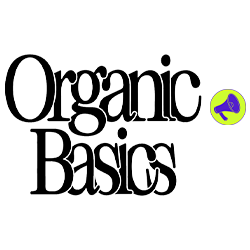
Organic Basics produced 1,740,755 pieces in 2024
-
306,037 pieces in 2023
-
182,714 pieces in 2022
Read More + Read Less -

Orwell+Austen produced 563 pieces in 2023

Osei-Duro produced 4,551 pieces in 2024
-
4 435 pieces in 2023
-
9,541 pieces in 2022
Read More + Read Less -

ÖSKJØNHEIT produced 25 pieces in 2024
{target="_blank"} in 2024](/_static/media/logo_ovs.png)
OVS produced 169,029,843 pieces in 2024
-
196,740,204 pieces in 2023
Read More + Read Less -

OXBOW produced 1,647,614 pieces in 2024

Péenkok produced 60 pieces in 2024

PERCENTIL produced 433,702 pieces in 2024

Picture produced 1,036,380 pieces in 2023

Planeta Incora produced 200 pieces in 2022

Puntada Austral produced 251 pieces in 2024

RAQ Apparel produced 10,637 pieces in 2023

RARA produced 180 pieces in 2024

Revival London produced 32 pieces in 2023

REYÈM produced 1,800 pieces in 2023

Rhea. produced 3,148 pieces in 2023

RILABEL produced 285 pieces in 2023

RVBK produced 90 pieces in 2023

Sailaal produced 211 pieces in 2023

SEAMLINE Atelier produced 750 pieces in 2024

Sirem Wild produced 483 pieces in 2024

SKFK produced 23,304 pieces in 2024
{target="_blank"} in 2023](/_static/media/logo_soliver.png)
s.Oliver produced 35,000,000 pieces in 2023

Stripe & Stare produced 325,560 pieces in 2023

Studio Anneloes produced 942,606 pieces in 2023

Studio Nani produced 550 pieces in 2023
{target="_blank"} in 2023](/_static/media/logo_superdry.png)
Superdry produced 23,000,000 pieces in 2023
-
33,200,000 pieces in 2020
Read More + Read Less -

Surorigen produced 1,040 pieces in 2024
{target="_blank"} in 2023](/_static/media/logo_targetaustralia.png)
Target Australia produced 78,000,000 pieces in 2023
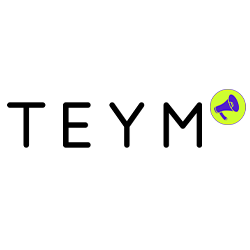
Teym produced 5,400 pieces in 2023

The Emperor’s Old Clothes produced 1,215 pieces in 2023
-
1,764 pieces in 2022
Read More + Read Less -

The Fruit Moth produced 750 pieces in 2023

The Launch B.V. produced 418 pieces in 2023
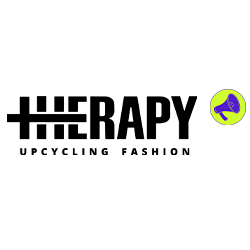
THERAPY produced 750 pieces in 2024
-
1,000 pieces in 2023
-
700 pieces in 2022
Read More + Read Less -
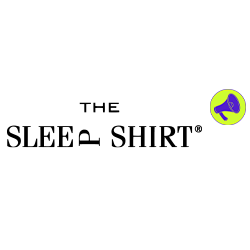
The Sleep Shirt produced 8,600 pieces in 2022

The View Yoga produced 474 pieces in 2023

Thinking MU produced 210 pieces in 2024

Thousand Fell produced 22,842 pieces in 2023
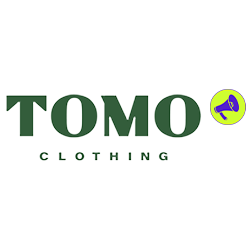
TOMO Clothing produced 4,231 pieces in 2023
 in 2023](/_static/media/logo_tomtailor.png)
Tom Tailor produced 33,156,089 pieces in 2023
-
Tom Tailor produced 39,829,219 pieces in 2022
Read More + Read Less -

TWOTHIRDS produced 168,742 pieces in 2024
-
235,625 pieces in 2023
Read More + Read Less -
{target="_blank"} in 2023](/_static/media/logo_unitedcolorsofbenetton.png)
United Colors of Benetton produced 60,540,044 pieces in 2023
-
67,000,000 pieces in 2022
Read More + Read Less -

Up-Fuse produce 7,830 pieces in 2024

Urbànima produced 617 pieces in 2022
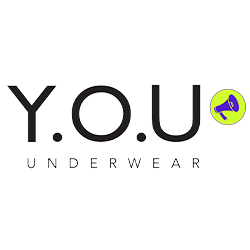
Y.O.U underwear produced 7,756 pieces in 2024

Vesica Piscis produced 5,511 pieces in 2024
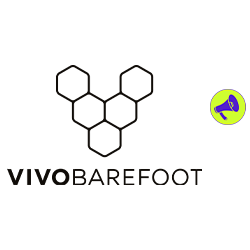
Vivobarefoot produced 1,240,874 pairs of shoes in 2024
-
1,075,897 pairs of shoes in 2023
Read More + Read Less -

Waly London produced 0 pieces in 2024

Wool4life produced 300 pieces in 2024
{target="_blank"} in 2022](/_static/media/logo_wrangler.png)
Wrangler produced 175,000,000 pieces in 2022

Wuka produced 482,533 pieces in 2024

Xandres produced 486,705 pieces in 2023

Yes Friends produced 18,883 pieces in 2024

1083 produced 50,000 pieces in 2023
What are the Types of Production Volumes Listed ?
Please Note!
For some of the brands listed above, especially those without a badge, we do not know if their number includes licensed products and/or product collaborations.
We DO NOT accept volumes reported by weight and will not list any brand that does not disclose their volumes by units. Why? One, there is no standardized weight to garment ratio since weight varies drastically between a wool suit and a childrens onesie. Given that we do not have transparency on how many of each type of garment is produced every year, we would have to rely on context specific calculations that are not representative of the global industry. Two, this answer is for fashion sustainability nerds…Developing a circular economy for the fashion industry is complex because unlike other commodities that enter our waste stream such as a plastic bottle or a beer can, clothing has the most market potential outside of recycling with opportunities to be recommodified through resale, repair or remanufacture before being recycled. This means that we are not developing infrastructure with the sole mission of moving a pre-consumer scrap material by the tonne to a recycling plant. On the contrary, for a true circular fashion industry to function, we must develop the infrastructure for individual garments to be resold, repaired, remanufactured and then recycled. Anyone who has attempted to remanufacture post-consumer fashion waste (whole garments) knows that a great deal of labor is required to disassemble and reassemble. Similarly, anyone who has attempted to recycle post-consumer fashion waste (whole garments) knows that a great deal of labor is required to prepare an individual garment to become feedstock, steps such as the removal of prints and notions. In summary, when production volumes are reported by weight we do not receive the nuanced information we need to develop an effective circular economy.
